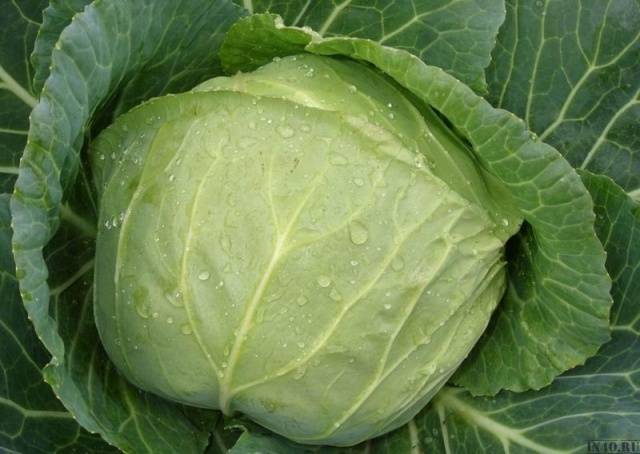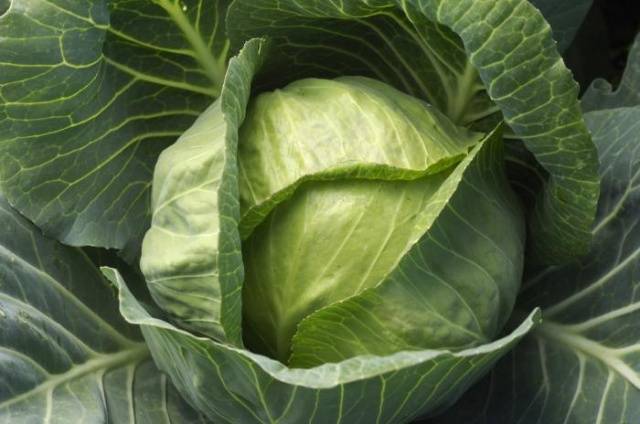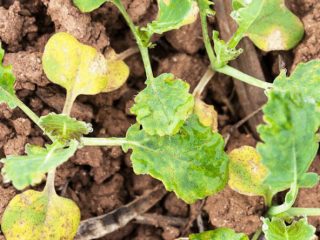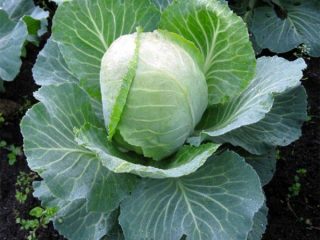Content
Delicious sauerkraut is a godsend for any housewife. The sour vegetable itself is a wonderful fresh salad, but if desired, it can also be used to prepare various dishes, for example, cabbage soup, vinaigrette, solyanka and even cutlets. The taste of all these culinary masterpieces will depend on the correct fermentation and, in particular, on the type of cabbage chosen. After all, it often happens that after making a lot of effort and following your favorite, traditional recipe, as a result of fermentation you get slimy cabbage with an unsightly appearance and obscene taste. And not every housewife in this situation will guess that the whole point is in the wrong choice of vegetable variety. So, let's figure out what are the best varieties of cabbage for pickling and storage, and how to choose the right heads of cabbage.
Which variety of cabbage is better to choose for pickling?
If the housewife has her own garden, then there will probably be a place for cabbage in it. In this case, experienced farmers advise growing several varieties at once: early varieties quickly form small heads of cabbage and are excellent for preparing the first fresh summer salads.Mid-ripening and late-ripening cabbage takes a long time to ripen, but at the same time its heads ripen large, dense and very juicy. This is the type of cabbage that should be used for pickling.
When you come to the market, you should also not buy the cheapest or “prettiest” cabbage. You should definitely ask the seller what type of cabbage he offers. Of course, it’s not easy to navigate the variety of varieties. That is why we will try to list the TOP 5 of the best mid-early and late varieties of cabbage for pickling. Having heard one of the names given below, you can safely buy a vegetable and prepare it for the winter.
The best mid-season varieties
The varieties offered below are excellent for long-term storage and pickling and fermentation. This list is compiled based on reviews and comments from experienced cooks and caring housewives. Finding such cabbage will probably be quite easy, because a conscientious farmer always offers the best product on the market and strives to satisfy the needs of the buyer.
Cabbage with an average ripening period can be grown even in the northern regions of the country. Its growing season averages 120-140 days. This time is enough for a small seed to turn into a full-fledged, mature head of cabbage.
Slava 1305
This delicious cabbage always takes a leading position in all castings, demonstrating excellent taste and external qualities, and high yield. Finding the seeds of this cabbage is quite simple, and in the autumn season it can also be found without problems at any agricultural fair.
The heads of this cabbage are medium sized. Their weight, depending on growing conditions, varies from 2.5 to 5 kg.The shape of the vegetable is flat-round, which is typical for late-ripening varieties. The upper leaves of the cabbage head are pale green, but in a cross section you can see tightly connected leaves of a milky white color. By growing this variety on your own plot of land, you can get a yield of 10 kg/m2.
The taste of the variety is very high: the vegetables are sweet, juicy and crispy. They are able to maintain their freshness for a long period of time.
Present
Many agricultural exchanges include this variety in the TOP 5 most popular on the market. This is explained by the fact that “Podarok” is perfectly adapted to domestic conditions, is unpretentious and, even in the most unfavorable weather, is capable of producing a harvest of 10 kg/m2.
The heads of cabbage, with an average weight of 4-4.5 kg, are very juicy, but never crack. Dense vegetables have a round shape and milky white leaves. The product demonstrates excellent keeping quality and is recommended for fermentation. The “gift” can be stored until March without loss of freshness and consumer qualities.
Belarusian
“Belorusskaya” is the best variety of cabbage for pickling and long-term storage, according to many experienced experts. So, under certain conditions, heads of cabbage can maintain their quality until the month of April. The vegetable is also great for pickling, preparing fresh and canned salads.
The mid-season variety ripens in 135 days from the day the seeds are sown for seedlings. During this time, dense, round heads of cabbage are formed. Their upper leaves are dark green in color.The weight of each vegetable is approximately 3.5 kg. By sowing the seeds of this variety in April for seedlings, already in September-October it will be possible to harvest a harvest of juicy and sweet cabbage in the amount of 8-9 kg/m2.
Menza F1
This excellent hybrid has long been famous for its high yield, excellent quality of fruits and the possibility of long-term storage. “Menza f1” will always harvest juicy, sweet, crispy and especially large heads of cabbage. This vegetable is used for long-term winter storage and pickling.
The head of cabbage "Menza f1" is especially dense. Its upper leaves are colored light green. In cross section, the vegetable is white. The variety belongs to the category of mid-early: from sowing the seed to the ripening of the head of cabbage, the period is 110-115 days.
Amager 611
White cabbage variety cabbage "Amager 611" is unique because the taste of the vegetable gradually improves during storage. Thus, it is generally accepted that for 6 months from the day of harvest, cabbage retains its usefulness, freshness and excellent taste.
The heads of cabbage "Amager 611" are not very large, weighing up to 4 kg, dense, flat-round in shape. A special feature of the variety is the silver-green, glossy upper leaves of the vegetable.
In addition to the listed mid-early varieties, good cabbage for pickling is “Dobrovodskaya”, “Yubilei f1”, “Aggressor f1" These same varieties can be stored in bins for long-term storage and pickling.
The best late-ripening varieties
Late-ripening cabbage varieties are grown in the central and southern regions of the country. Their growing season is about 150-180 days.As a result of such long-term cultivation, the owner can obtain large and very juicy heads of cabbage, suitable for winter storage, pickling, and pickling. You can see the list of the best varieties of late-ripening cabbage in the following section:
Moscow late
The variety has good commercial and taste qualities. It is grown by many gardeners and farmers in the central and southern regions of the country. In 150 days, cabbage grows from a small seed into a large head of cabbage weighing up to 8 kg. Sweet and crunchy vegetables do not crack, covered with gray-green juicy leaves. High crop yield (up to 12 kg/m2) allows you to prepare fresh, salted, pickled and canned vegetables for the winter. The taste of cabbage preparations of this variety is always wonderful.
Kharkov winter
Late-ripening cabbage “Kharkovskaya winter” ripens in 170 days. At the end of the growing season, the farmer receives small heads of cabbage weighing up to 3.5 kg. The center of such vegetables is white, and the upper leaves are bright green. The crop yield does not exceed 8 kg/m2, but this is quite enough to stock up on fresh vegetables for the winter and prepare healthy and tasty sauerkraut for the whole family.
Valentina f1
The late-ripening hybrid is excellent for growing in the south of Russia. The growing season of the crop is 180 days. During this time, heads of cabbage weighing 3-4 kg ripen. Small, but very juicy, sweet and crunchy vegetables are great for pickling and pickling. Cabbage can be stored without processing for 6 months.
Geneva f1
Heat-resistant, high-yielding hybrid of white cabbage, bears fruit weighing 4-5 kg and a total yield of 9 kg/m2. The juicy leaves of the sweet vegetable are densely packed together and are great for pickling and pickling. The upper leaves of this variety have a characteristic lilac hue. The cabbage is white in cross section.
Turkiz
When studying the best varieties of cabbage for pickling, one cannot ignore “Turkiz”. This variety was obtained by German breeders, but has also found application in our country. The variety is resistant to cracking, drought, and various diseases.
Round heads of cabbage are covered with dark green leaves. The dense pulp of cabbage is colored slightly light green. Vegetables weighing only 2-3 kg are perfectly stored until the arrival of the new summer season. The wonderful sweet taste and juiciness of the vegetable allows you to prepare a delicious fresh salad, preserve, pickle or ferment cabbage for the winter.
In addition to the proposed varieties, “Stone Head” is suitable for pickling and fermentation, as well as long-term winter storage. All of the varieties listed above are zoned for various regions of Russia, adapted for the domestic climate, and even in the most difficult climatic conditions are capable of producing good harvests. Finding seeds or already mature heads of such cabbage will not be difficult.
How to choose good heads of cabbage
When choosing cabbage for pickling, you need to pay attention to the variety and characteristics of the cabbage itself:
- Only mid-early or late-ripening white cabbage is suitable for pickling. This is due to the high sugar content in such vegetables.
- The heads of cabbage should be dense and large.
- The upper leaves of the vegetable should be as light as possible. Green leaves should not be fermented.
- The sweeter the vegetable, the higher the likelihood of successful fermentation.
- A good head of cabbage “springs” when compressed, which indicates its high quality.
By watching the video, you can also get some tips on what varieties of cabbage to choose for fermentation and storage and how to correctly identify a high-quality vegetable:
Considering these recommendations, you can always count on success in sourdough. Crispy and juicy, moderately sour cabbage will definitely come to the table and feed all family members. The benefits and amazing taste of properly prepared sauerkraut are always difficult to overestimate.





















